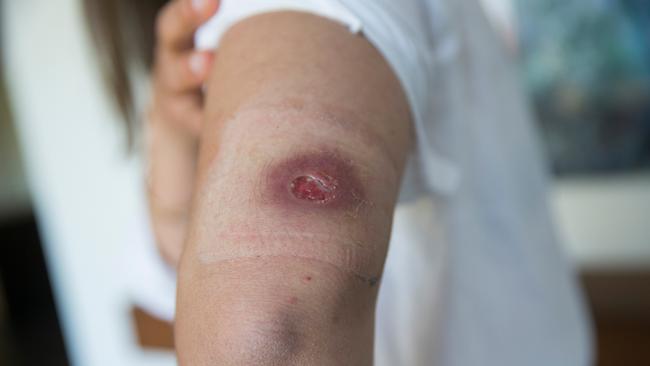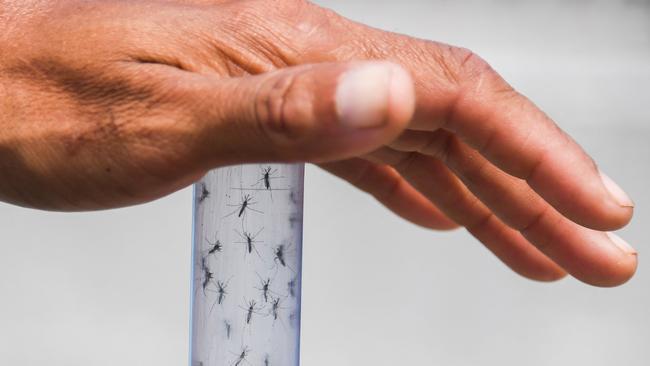Mosquitos to blame for spread of flesh-eating Buruli ulcer
Victoria has one of the highest rates of the flesh-eating Buruli ulcer in the world, and now scientists know what’s behind its spread.
Victoria
Don't miss out on the headlines from Victoria. Followed categories will be added to My News.
Victorian researchers have solved an 80-year-old mystery about how humans are infected by the flesh-eating bug that causes Buruli ulcer.
In a major breakthrough, the dedicated sleuths have confirmed “without doubt” mosquitoes are the culprit spreading the skin disease.
Buruli ulcer is caused by toxins made by the Mycobacterium ulcerans bacteria. It destroys human skin cells causing ulceration and skin loss.
This is the first time scientists have proof of exactly how it is transmitted to humans.
Early diagnosis and the right antibiotics can cure it, but experts say confirmation of the cause is exciting as it means it can be avoided in the first place.
Victoria has one of the highest incidences of the disease in the world with high risk areas identified in inner Melbourne around Essendon, Moonee Ponds, Brunswick West, Pascoe Vale South and Strathmore. The coastal towns of Rye, Sorrento, Blairgowrie and Tootgarook on the Mornington Peninsula are also high risk.

Last year there were a record 363 cases recorded in Victoria prompting an alert this week from health authorities to take extra precautions to avoid infection.
The results of this latest research were published overnight in Nature Microbiology and led by University of Melbourne’s Professor Tim Stinear. He is the director of the WHO Collaborating Centre for Mycobacterium ulcerans at the Peter Doherty Institute for Infection and Immunity.
Professor Stinear says the five-year study “categorically confirms” mosquitoes are the primary vehicle for transmitting the ulcer-causing bacteria from the environment to people.
He said with an alarming and inexplicable surge in cases in parts of Victoria, the discovery represents a pivotal and significant advancement in the efforts to curb the spread and protect communities.
“I am personally excited because it is the first time since Australian scientists discovered the bug 80 years ago that we have actually got advice that can protect us from getting infected and that we can use with confidence” Professor Stinear said.

He says it is a health message that “we can do something with” immediately.
The team discovered the culprits after they matched the genomic sequencing of the bacteria with the genetic make-up of the same bacteria found in mosquitoes.
“The mystery is solved … making mosquito bite prevention and mosquito control obvious forms of prevention,” Professor Stinear said.
Professor Stinear led the team that included partners from the Bio21 Institute, Agriculture Victoria, Austin Health, Victorian Department of Health, the Mornington Peninsular Shire and CSIRO.
Professor Paul Johnson, an infectious diseases physician at Austin Health and a member of the research team, said the team had faced a difficult road to convince others that mosquitoes were spreading Buruli ulcer.
“We long suspected mosquitoes were involved, but there is no precedence for a bacterial infection like Buruli ulcer being transmitted this way. Our team faced considerable scepticism, so we gathered irrefutable evidence to support our claim,” he said.
“This research is significant because we can all take simple actions, like applying insect repellent and removing stagnant water around the house, to protect the community and reduce the risk.”
How to avoid mosquitoes:
• Wear loose-fitting, long-sleeves tops
• Use insect repellent
• Avoid peak bite times at dawn and dusk





